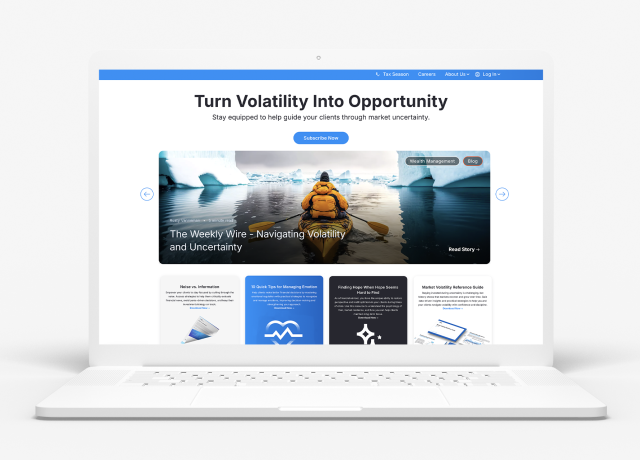- Tariffs: Tariffs dominated financial headlines, with some proposed tariffs (Mexico and Canada) postponed, while others (China) remain in play. Entering the week, the threat of retaliatory tariffs and tariffs on steel and aluminum are the newest headlines on the topic.
- Latest On Economy: Q4 earnings growth improved to 16% year-over-year, the highest since 2021, despite disappointments from Alphabet and Amazon. Economic data showed continued growth, but with weaker-than-expected job growth and rising inflation expectations.
- Key Events to Watch: Markets will closely monitor President Trump’s tariff plans, inflation reports (CPI and PPI), and the retail sales data, which will be critical for gauging consumer strength. Additionally, the AI Summit in France could drive market sentiment given AI’s growing economic impact.
Looking Back to Last Week
Tariff policy took center stage in financial headlines last week, shaping market sentiment. Some of the proposed tariffs—like those on Mexico and Canada—were postponed, offering a temporary sigh of relief. However, other tariffs, particularly those on China, remain on track. Adding to the uncertainty, the President has now signaled plans for retaliatory tariffs in response to any imposed on the U.S. in additions to tariffs on steel and aluminum.
Against this backdrop, the U.S. stock market posted a slight loss last week, while international equities saw modest gains. Bonds moved higher, as did other diversifying asset classes like liquid alternatives and real assets. Commodities stood out, rising another 2% on the week, and continued to lead year-to-date performance among major asset classes.
The fourth quarter earnings season is now nearly two-thirds complete. Despite a few notable disappointments, it was a good week for earnings growth. Notably, Alphabet and Amazon fell short of overall expectations though, leading to market pullbacks in those names, yet overall year-over-year earnings growth for Q4 improved last week to 16% year-over-year - the strongest since Q4 2021. Encouragingly, earnings growth is broadening beyond just the dominant technology sector, a trend confirmed by recent data.
Economic data, however, remains soft overall. While the ISM manufacturing index showed its best reading in some time, other key indicators missed expectations. January’s nonfarm payroll report showed weaker-than-expected job growth, though the unemployment rate edged down to 4.0%. Inflation remains a concern, with average hourly earnings climbing 4.1% over the past year and inflation expectations rising. Consumer inflation expectations, in particular, surged. According to the University of Michigan survey, one-year inflation expectations jumped from 3.3% to 4.3% in just a month. Soaring egg prices (up over 50% year-over-year) have certainly caught consumers' attention.
Looking Ahead to This Week
Geopolitical developments will continue to drive market sentiment, with President Trump’s proposed steel tariffs taking center stage entering the new week.
On the inflation front, two key reports are on deck: the Consumer Price Index (CPI) on Wednesday and the Producer Price Index (PPI) on Thursday. Regarding the former, headline CPI is expected to be 2.8%. Core (ex-food and energy) CPI is expected to be 3.1%. Friday brings Retail Sales data—an especially important indicator given that consumer spending accounts for over two-thirds of the U.S. economy. Fourth-quarter consumption growth hit 4.2%, well above the long-term average of 3%, making this report a critical test of whether consumer momentum is holding up. Note that consumer sentiment measures have fallen of late.
Additionally, an AI Summit in France early this week could generate market-moving headlines, particularly given AI’s increasing influence on the economy and financial markets.
Consensus Thinking – Could Tailwinds Become Headwinds?
Now that we are more than a month into 2025, what is the prevailing market sentiment on the economy? Understanding consensus expectations is important—not just because they shape market narratives, but because they highlight where surprises could emerge.
Right now, investors broadly believe that economic and earnings growth will remain strong this year – a stark contrast to sentiment a year ago when recession fears loomed large. Back then, economic data consistently surprised to the upside, fueling market resilience. However, recent economic reports have started to surprise to the downside. While overall growth remains intact, could a former tailwind for markets turn into a headwind? That is something worth watching closely.
Closing Thoughts
The weeks and months ahead promise plenty of market-moving events, and volatility is likely to remain elevated. Policy uncertainty can create short-term turbulence, but it also lays the groundwork for long-term opportunity. In this environment, cautious optimism remains a prudent stance—while staying invested, diversified, and disciplined remains the key to long-term success.
As always, if you have any questions, we are here to help you navigate the path forward. Please feel free to contact us at strategists@brinkercapital.com or at rusty@orion.com. Thank you for your time and trust.



























